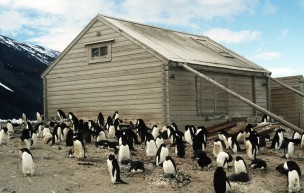
Humans’ first building in Antarctica
There are a number of huts dotted around Antarctica, relics of the early explorers from the Heroic Age of Antarctic exploration. Most are clustered around Ross Island where the early expeditions found the easiest access to the continent.
There you will find the huts of Borchgrevink (1898-1900), Scott (Hut Point 1901-1904; Cape Evans 1910-1913), Shackleton (Cape Royds 1907-1909), and Hilary (1957)
There are other huts as well and I have written about some of them in other posts but Borchgrevink’s Hut is special because it is the only example left of humanity’s first building on any continent.
According to the Antarctic Heritage Trust (https://bit.ly/2MuD5Ox):
On 17 February 1899, Norwegian Carl Borchgrevink’s British Antarctic (Southern Cross) Expedition landed at Cape Adare, one of the most inhospitable sites on earth, and set up base.
The expedition erected two modest timber huts – a living hut, and a stores hut – that came as a kit from Norway. Today, the huts are surrounded by boxes, sacks of coal, barrels and other miscellaneous stores.
The roof of the stores hut was removed in 1900 before the expedition left. Whilst preparing to leave, the men began to dismantle the stores hut with the intention of moving it south, removing the roof before changing their mind.
On leaving, the party also left stores, and erected a cross in memory of Nicolai Hanson, who had died during the expedition (the first person to be buried on Antarctica).
It is a tribute to the solidity of their construction that both huts remain in surprisingly good condition.
Many of the original contents remain intact inside the living hut. The fitted bunks are all still there, the original stove, and many of the stores, clothing and papers are in good condition.
The remnants of Borchgrevink’s expedition were overlaid by the use of the hut for most of 1911 by the six members of the Northern Party of Scott’s British Antarctic Expedition.
There is a conservation plan for the site and its collection of more than 1,000 artefacts. Due to its remote location, the site poses a number of logistical challenges.
The Norwegian Government is helping to fund the work needed to preserve the huts and their contents. A multi-year work programme began during the 2015 – 2016 season with logistical support provided by Antarctica New Zealand.
